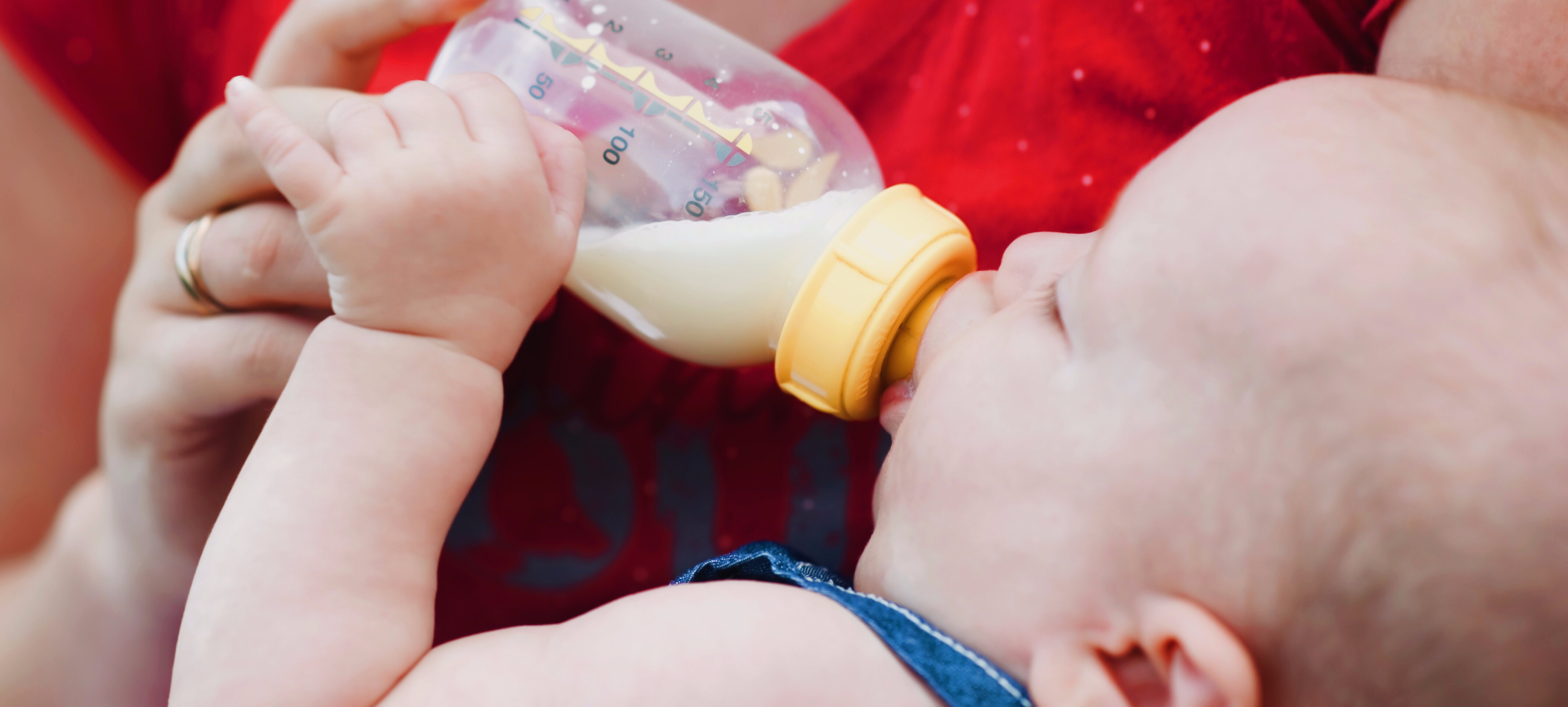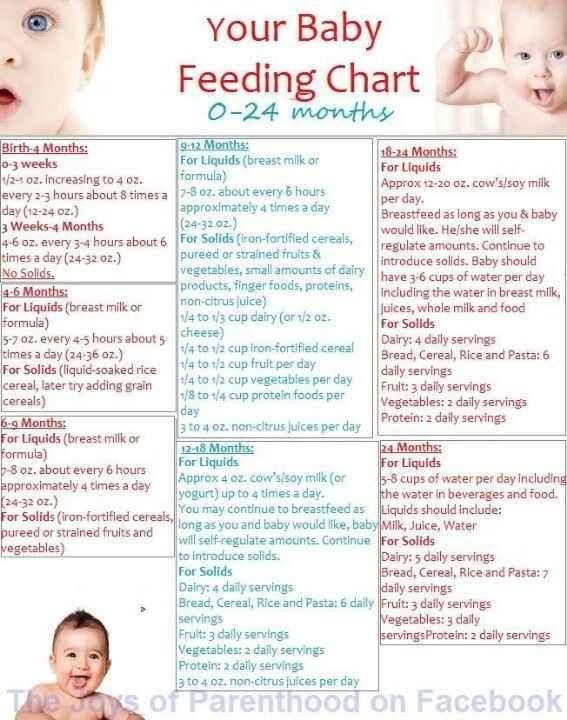Feeding baby whole foods
How to Get Started with Baby Led Weaning: A Nutritionist's Guide
by Dana Simkins
Disclaimer: This post contains affiliate links which means I will receive a small commission (at no extra charge to you) should you choose to purchase a recommended product.
If you’re a parent, you may have heard of a style of infant feeding called Baby Led Weaning. I first learned of this approach in my Pediatric Nutrition course while working on my Master’s. I have since used the technique with my own three children! In this post I’ll talk you through all the basics and let you know how to get started with baby led weaning.
What is Baby Led Weaning?
The basic idea is that instead of feeding your baby pureed solids, you offer them whole foods. This allows baby to experience a variety of textures and flavors of food. Rather than being spoon-fed, your baby can regulate his own intake. And research suggests Baby Led Weaning babies are less prone to overeat later in childhood*. Babies have the ability to regulate their food intake based on physical hunger cues, something that becomes increasingly more difficult as we get older. Perhaps the longer we allow them to experience food in that way, the better.
You might be wondering…if she’s a proponent of Baby Led Weaning (BLW), then why are there recipes for pureed baby foods on this site? I’m a strong believer that you should do what works for you in parenting. If you feel that you might better nurture your child by offering pureed foods, or if the BLW approach makes you nervous, trust your instincts. Neither method is the “right” way, they are simply different and may benefit your baby in different ways. Keep reading to find out how I incorporate purees into Baby Led Weaning.
Feeling Unsure?If you’re feeling unsure because other people have told you it’s a bad idea, take a minute to check out my post on Dealing With Doubters.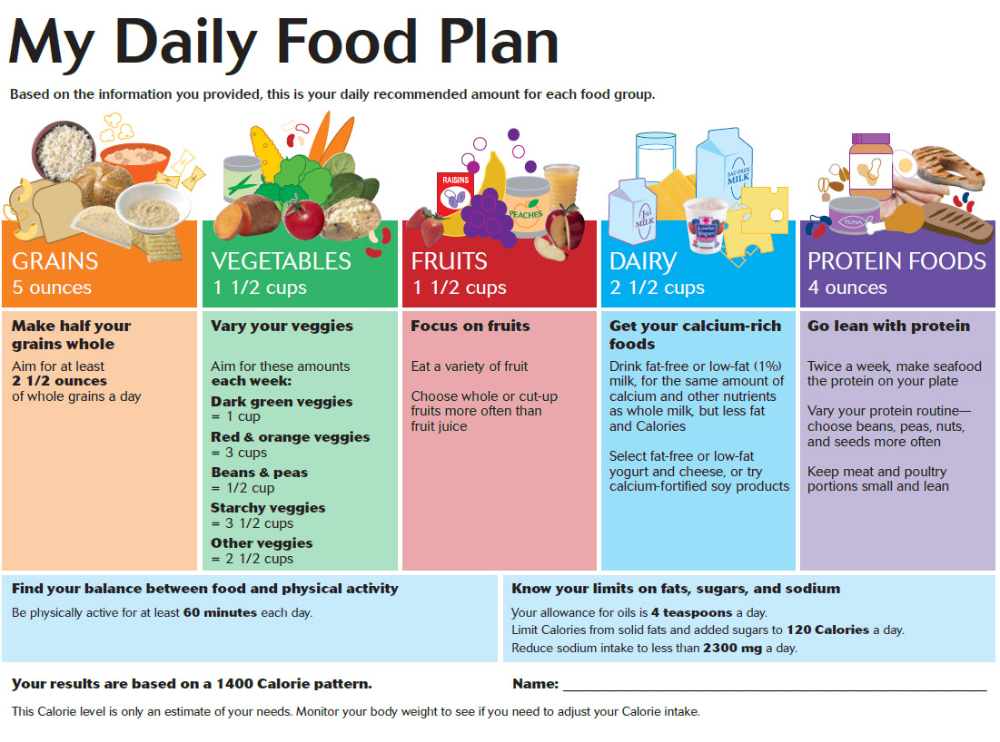 It’s sure to give you a confidence boost and set your mind at ease about how to get started with Baby Led Weaning the right way.
It’s sure to give you a confidence boost and set your mind at ease about how to get started with Baby Led Weaning the right way.
Many moms (including me!) choose to do Baby Led Weaning while still offering purees to their children. There are some foods, like yogurt, that offer great nutritional value for your infant (protein, probiotics) but can be messy to offer to a 6-month old without assistance. I go more in-depth on how to include purees in my Baby Led Weaning Myths post and my Starter Foods post.
How to Get Started With Baby Led WeaningWhen can I start Baby Led Weaning with my child?
What do I need to get started?
What sort of foods should I be offering?
When should I feed my baby solids? Do I still offer breast milk/formula?
But, my baby has no teeth…how can she chew?
What about choking?
The American Academy of Pediatrics does not recommend offering your baby any solids (pureed or not) before 6 months of age. The majority of infants are not ready to eat solids before then, and there is evidence that it could result in the development of allergies since their digestive systems are not fully developed yet.
The majority of infants are not ready to eat solids before then, and there is evidence that it could result in the development of allergies since their digestive systems are not fully developed yet.
6 months is a general recommendation, and of course there are some babies who are ready earlier, and some who might even take a bit longer. All of this should be determined by you and your pediatrician, but generally a baby is ready to go if he/she:
- Shows interest in your food at meal times by leaning or reaching for it
- Can sit up unaided
- Has head and neck control
- Has lost the tongue-thrust reflex, and does not push food out of his/her mouth but is willing & able to swallow
Once you’ve read through this post about how to get started with baby led weaning make sure to prepare yourself with these fun and functional tools! They’ll help minimize the mealtime mess, and make meal prep a breeze.
What sort of foods should I be offering?
The Baby Led Weaning approach means you can offer your baby almost anything you’re eating with a few exceptions.
Be sure any food offered does not have too much salt or added sugar. Too much salt can overwhelm their tiny kidneys and added sugar offers no nutritional value, it just adds empty calories.
Do not offer:- Honey to children under 1 year of age. Honey can contain botulinum toxin which can cause botulism in infants.
- Cow’s milk to children under 1 year of age. Babies can’t handle the proteins in cow’s milk before 1 year of age. However, yogurt and cheese made from cow’s milk are acceptable since the proteins in these food have been partially broken down.
- Small, hard foods like whole nuts, popcorn and peanut butter (on its own) can all be serious choking hazards.
 These should not be offered to infants.
These should not be offered to infants.
- Bread (limit to one slice a day since it tends to be high in salt/sugar and may cause constipation)
- Fish high in mercury content such as tuna, mackerel, or swordfish (limit to two servings per week to be safe)
- Processed foods like potato chips, canned soups/sauces, condiments and fried foods tend to be loaded with salt & sugar and offer little to no nutritional value.
- If there is history of food allergy in your family you may want to introduce foods one at a time to be sure there is no adverse reaction. Talk to your doctor about this before starting any solids.
- The following foods can be a choking hazard and should be sliced up before offering to baby: whole grapes, bony fish, fruits with pits (cherries, olives, etc.
 )
)
- Fish fingers (tilapia works really well simply breaded)
- Chicken (grilled or roasted, cut into strips)
- Steamed Broccoli Florets
- Steamed Carrots (larger pieces not baby carrots)
- Cavatappi (or other “curly” pasta, like fusilli)
- Sweet Potato “Fries” (cut sweet potatoes into strips and bake until soft enough to mash with your fingers)
- Avocado cut into long pieces
- Pears, apples, cucumber, peeled & cut into long pieces
- Canned/jarred mandarin wedges in water (I recommend these over fresh because there are no seeds)
- Toast strips with hummus spread
- Cheese sticks
- Banana with peel as a handle (see picture below)
When should I be feeding my baby solids? Do I still offer breast milk/formula?
Breast milk/formula should still make up the majority of baby’s diet until 1 year of age. Babies’ tummies are very small, and breast milk/formula is much more nutrient rich than any food. It provides them with everything they need for the first year. You may have heard this saying before, “Food before one is just for fun!” It’s true, for most babies breast milk/formula offers all they need until their first birthday.
Babies’ tummies are very small, and breast milk/formula is much more nutrient rich than any food. It provides them with everything they need for the first year. You may have heard this saying before, “Food before one is just for fun!” It’s true, for most babies breast milk/formula offers all they need until their first birthday.
The introduction of solid foods before 1 year is a “bonus”, may help avoid the development of allergies and allows them exposure to various flavors and textures.
To be sure your baby is getting enough nutrition from milk, I recommend nursing/offering a bottle before each “meal” of solid foods. This will also assure that your baby is in a good mood and doesn’t get frustrated while trying to eat.
What about choking?
First of all, it is very important that you know the difference between gagging and choking (but also know infant CPR). It is totally normal for your little one to gag a bit as they are learning to eat. It takes a while for them to learn the proper way to move food around their mouth. Here is an example of my son gagging when we began Baby Led Weaning at 6 months. Note how he moves the food around and continues to chew…
It is totally normal for your little one to gag a bit as they are learning to eat. It takes a while for them to learn the proper way to move food around their mouth. Here is an example of my son gagging when we began Baby Led Weaning at 6 months. Note how he moves the food around and continues to chew…
Basically, if baby gags but keeps on happily eating and shows no signs of distress, everything is fine. You will know if she’s choking because her eyes will get wide, she won’t be getting any air and she will stop eating. This NEVER happened with with either of my children, and is highly unlikely with Baby Led Weaning.
Because baby is deciding how much food to take in and because BLW encourages chewing rather than sucking, you’ll find babies eat more slowly and very small bits at a time. Offering bigger pieces can help avoid choking, too.
Offering bigger pieces can help avoid choking, too.
In the unlikely event your baby is actually choking, call 911 immediately and be prepared with infant CPR techniques.
Still not sure what to feed baby?If you still aren’t sure where to begin, I urge you to check out my 4-week Baby Led Weaning Family Meal Plan! It’s a whole month of original recipes for your BLW baby and everyone else under your roof. Cook once, feed everyone! Along with the recipes are super organized shopping lists and serving tips for various ages (6m+).
For everything you need to know about Baby Led Weaning, check out this book by Gill Rapley and Tracey Murkett, the “creators” of Baby Led Weaning. I write that in quotations because they write in their book that parents have been doing this for a very long time, they just gave it a name and came up with tips, tricks and guidelines.
For some Baby Led Weaning recipes, check out Baby Led Feeding .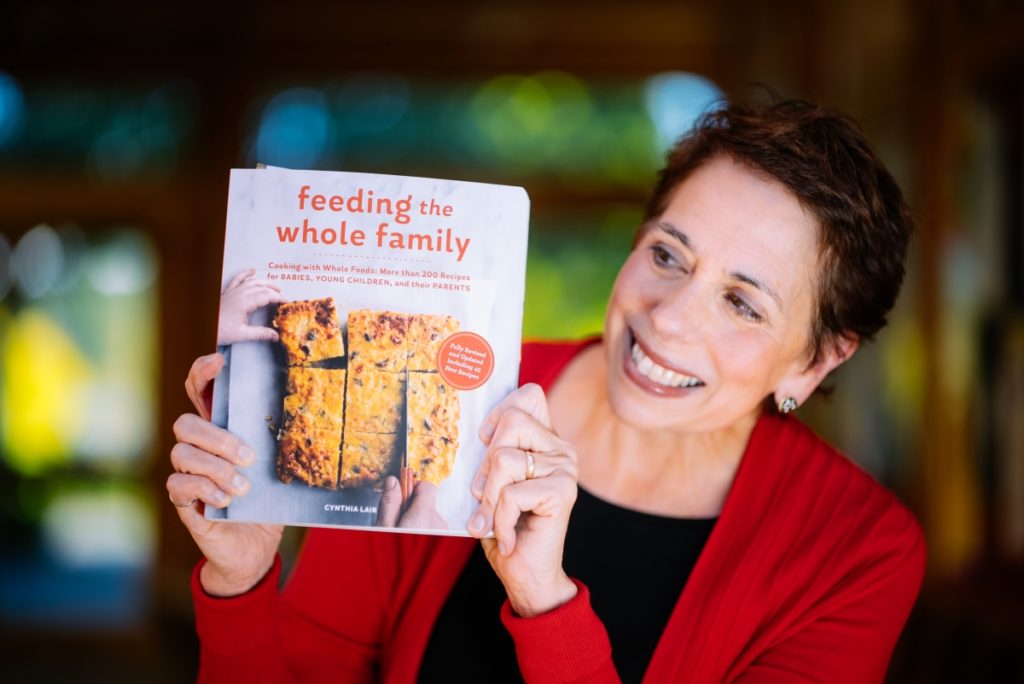 It’s chock full of healthy, tasty options for your little one starting at 6 months! A great tool to get you started with Baby Led Weaning.
It’s chock full of healthy, tasty options for your little one starting at 6 months! A great tool to get you started with Baby Led Weaning.
Do you think Baby Led Weaning is something you might try? Any tips on how to get started with Baby Led Weaning? Post about your experience/opinion in the comments!
How I discovered and embraced Baby-Led Weaning/Feeding (BLW)
A few weeks ago I sat at the dinner table and watched Clara furrow her brow as she focused on a centimeter square piece of omelet that was sitting on her dinner tray. She reached a chubby arm and closed her dimpled hand over the egg, raking it closer, before clutching it in her tight grip and transferring it to her mouth. It took some effort, but she succeeded, and thoughtfully chewed and swallowed the omelet before looking around for more. I actually blinked back a few tears in awe and pride.
Clara is not quite six months old and is eating on her own like a little champion. She is slow, messy, and doesn’t actually ingest all that much, but gracious me, she is not picky! In fact, quite the contrary, she wants to eat everything. In solid form, too.
She is slow, messy, and doesn’t actually ingest all that much, but gracious me, she is not picky! In fact, quite the contrary, she wants to eat everything. In solid form, too.
How did we get here? No drippy rice cereal? Brown-colored puree? Well, while I was still pregnant with Clara, my doula tipped me off to a method for introducing solids called Baby-Led Weaning
, or as I like to call it, Baby Led Feeding. I have no intention of weaning Clara yet, but have been supplementing her diet for a month or so now using BLW.
Baby-led feeding is the common-sense practice of giving your baby soft, palatable whole foods and letting her feed herself her first ‘bites’, while continuing to breastfeed. The theory is that babies will experiment and discover food at their own pace, as well as develop new abilities including chewing and keen hand-eye coordination.
I’ve certainly seen firsthand the benefits of skipping purees and moving straight to solids.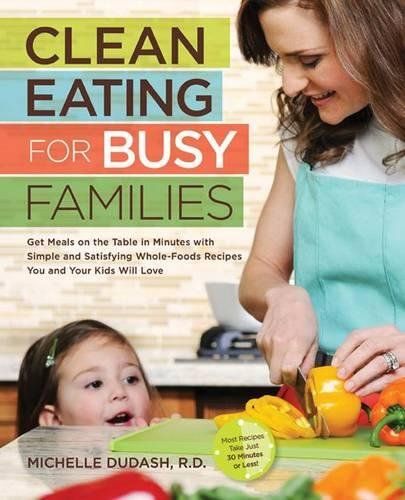 Not only is it less work in the kitchen, but Clara is continually astounding us with her early ability to chew and participate around the dinner table. And of course I’m hoping in the long run that she’ll be open to a much wider range of food than my boys were.
Not only is it less work in the kitchen, but Clara is continually astounding us with her early ability to chew and participate around the dinner table. And of course I’m hoping in the long run that she’ll be open to a much wider range of food than my boys were.
What are the advantages of BLW?
Skipping purees and going straight to solid food sure sounded attractive to me, as I never enjoyed the spoon-feeding days with my boys, but I have to admit, I wondered if it would really be a success. It only took a few days for me to observe that a baby who is ready and eager to eat, as Clara was, is completely capable of handling, chewing, and eating solid foods.
In brief, here are some of the advantages of BLW versus jarred baby food/purees:
- Baby eats what you eat. So, no extra meal prep, dishes, etc.
- Babies are in control of what they are eating. They stop when they are full, or continue when they are hungry.
 There’s no (less?) power struggles.
There’s no (less?) power struggles. - Babies are more likely to be better eaters as toddlers and young children because they have been exposed to such variety of taste and texture, and been in control of their eating, from such an early age.
- Babies feed themselves, leaving you free to use a knife and fork of your own – while supervising, of course.
- Babies learn to chew first, and then swallow, as opposed to just letting the puree slide down, which, in my opinion, makes for a difficult transition to chunkier food and real solids.
Getting Started
Whether Clara is a budding ‘foodie’ or not, I have to credit BLW for giving me the confidence to set whole foods down in front of my tiny little girl – and allowing her to swipe an occasional slice of tomato off my plate.
We started, unofficially, at 4 months, when she tucked into an ear of corn and proceeded to give it about 20 minutes of her time.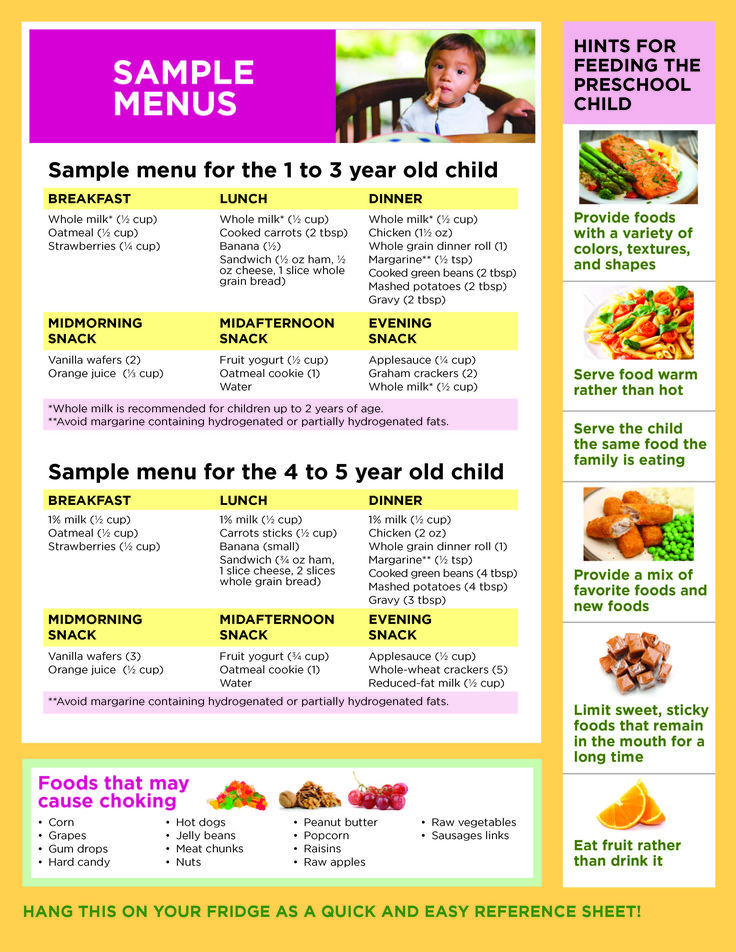 From there we moved on to chicken bones, with shreds of meat attached. I had noticed the signs of early teething, so likely the corn and the bone felt good on those sore gums; still, she was obviously interested in food. I just wasn’t sure if her tummy was ready.
From there we moved on to chicken bones, with shreds of meat attached. I had noticed the signs of early teething, so likely the corn and the bone felt good on those sore gums; still, she was obviously interested in food. I just wasn’t sure if her tummy was ready.
By 5 months she was holding a peach and sucking the juices from it. We moved on to vegetables, some braised meats, and pancakes and her chewing improved drastically. A favorite food was oven-roasted zucchini sticks.
Hand-eye coordination and dexterity already surprised us at (almost) 6 months. She now eats as if hungry, although food is still like a toy for her and she gets most of her ‘food’ from breast milk.
Tips for Baby-Led Weaning
Watch for signs that baby is ready.
We eat together as a family every evening as a way of creating a healthy family food culture. While sitting on my lap at the dinner table, Clara would take my hand and gently redirect my fork to her mouth. It doesn’t get more obvious than that.
Other signs we noticed were:
- intently watching others eat
- making little noises and sucking motions with her mouth
- drooling
BLW and a Whole Foods Diet
Families that are striving for whole foods diets are already on the right track to Baby-Led Weaning. Most of the foods on your table are suitable for baby, too, meaning they feature organic ingredients, and are for the most part, unprocessed.
What a time-saver when the entire family can sit together and eat the same dinner!
Clara’s Diet:
I’m starting slowly with Clara, so although she’s been grazing for almost two months, her diet is still limited. I’m holding off on grains (difficult to digest) save for a triangle of French Toast here and there, as well as dairy, although I may try goat yogurt soon.
I’m also waiting on very sweet fruits such as banana, blueberries and pineapple. I’d prefer if she formed an attachment with vegetables and savory flavors before going ‘bananas’, as it were, on sweeter food.
- chicken, usually braised until soft and tender
- beef, some steak, some ground beef (easy to pick up and chew)
- salmon
- peaches, pears, whole or sliced, very ripe, peeled
- strawberries
- broccoli, whole steamed florets
- sweet potato, zucchini ‘fries’, baked
- avocado
- corn on the cob
- carrots, roasted
- scrambled eggs & omelets
- French Toast, pancakes
Right now we’re waiting for Clara to be a little stronger when sitting up, and then it will be time for a whole new menu! Squash, apples, beets – fall has so many lovely foods that I can’t wait for her to try.
Here’s what a few ‘real food’ mothers have to say about Baby-Led Weaning:
Nicole, The Art of Simple.
“BLW has been super fun. I’ve been amazed at the dexterity Hallee has acquired in less than two months. I like that with BLW I am teaching my baby to put food in her mouth and chew it (or suck/gum it to start), rather than teaching her to swallow first, which is actually a little backwards if you think about it.
”
Katie, Kitchen Stewardship.
“Baby-led weaning may mean that my 12-month-old eats like a carnivore who loves fruit but I’m okay with that. It feels really good and natural to trust his instincts (except when he throws food overboard onto the floor), and I haven’t missed the special cooking and reheating of “baby food cubes.” My little guy hardly ate anything until 10 months old and then had 4-5 foods he enjoyed, and I’m so glad I didn’t feel like I had to feed him so much food and so many choices. Those power struggles over the highchair tray aren’t worth it.”
Brittany, A Healthy Slice of Life.
“Hailey eats what we eat! I make sure it’s modified to fit her needs (soft, long pieces with no spices), and we can all eat together. And if we’re out? She can eat off our plate- no spooning her food! So far, I love baby led solids.”
Looking ahead
I’ve been told to expect a bit of a lull around 7-8 months as babies get over the novelty of handling and eating foods, but pick up with renewed interest around 9 months. We shall see. I think once Clara discovers how her mama can cook she won’t want to leave the table! *wink*
We shall see. I think once Clara discovers how her mama can cook she won’t want to leave the table! *wink*
For me, there is no haste to make and freeze cubes and bags of frozen puree. Clara will eat what we eat and celebrate the seasons and the variety they bring. I’ll definitely be reaching for the The Baby-Led Weaning Cookbook
along the way.
Now, if only we had a dog to take care of the mess under the high chair…
Resources:
- The Baby-Led Weaning Cookbook
- Baby-Led Weaning: The Essential Guide to Introducing Solid Foods – and Helping Your Baby to Grow Up a Happy and Confident Eater
- BabyLedWeaning.com
- BLW Facebook group
Comments? Questions? Experienced BLW parents, I’d LOVE your input!
Proper nutrition of a child is a guarantee of health - Children's City Polyclinic No. 1
Every parent wants his child to grow up healthy, smart, happy.
From childhood, we must teach our children to choose from the variety of foods that are really good for health. The nutrition of children is somewhat different from the nutrition of adults. If the child's nutrition system is built correctly, then the child develops normally, both physically and mentally. nine0007
Make your family's way of life by introducing your child to proper nutrition every day. There is no need to arrange constant lectures from this on the topic of what is useful and what is harmful. By actively communicating with your child, setting an example, you instill good eating habits.
Only good things should be spoken at the table. The situation should help the child to relax, then the appetite will be good and the mood will be friendly. Children can help you with serving and decorating dishes. When serving vegetables and fruits, ask the children what vitamins and minerals they contain and why they are so useful. nine0003 In order to organize the proper nutrition of the child, you need to follow several important rules:
Rule 1
Food should be varied.
This is an important condition for the child's body to receive all the substances necessary for growth and development. Every day, the child's menu should include: fruits and vegetables; meat and fish; milk and dairy products; grain products (bread, cereals, cereals). Insufficiency or excess of food consumed by a child can adversely affect the activity of the gastrointestinal tract, contribute to metabolic disorders, increase overweight (even to various degrees of obesity) or lead to malnutrition. nine0007
If the child refuses, there is a healthy dish, offer him to experiment and make the dish unusual.
So, with the help of dried fruits and nuts, you can put a funny face on porridge, use ketchup and greens to draw a pattern on scrambled eggs, put mashed potatoes on a plate in the form of a snowman figure, etc.
What should not be used in children's nutrition:
- Offal, except liver, tongue, heart; blood, liver, raw smoked sausages.
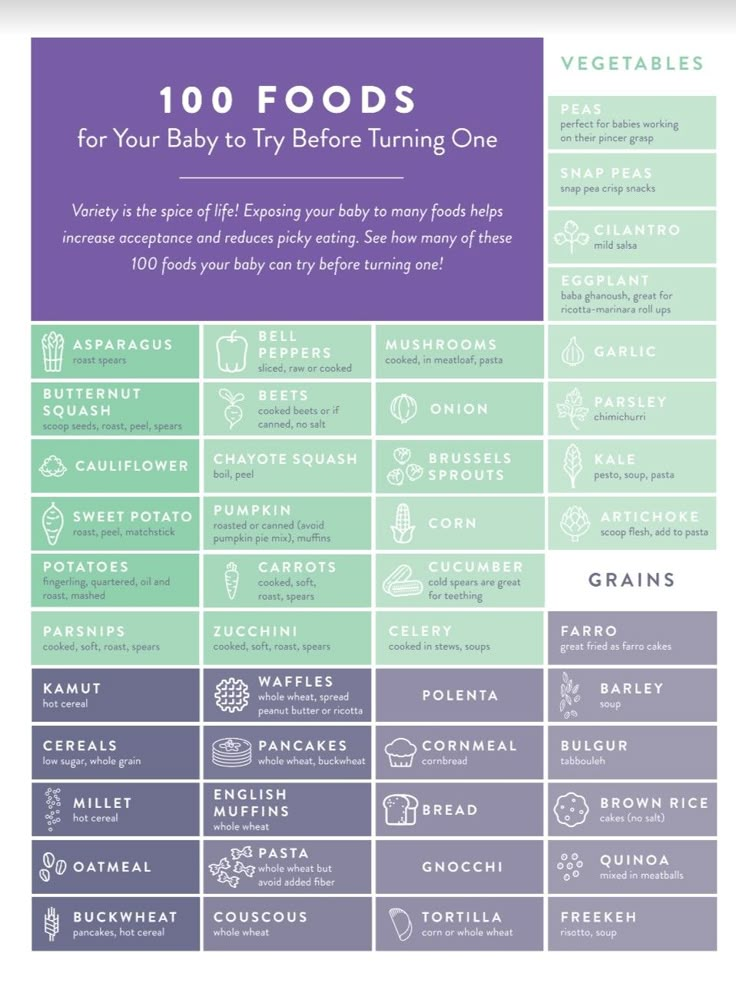 nine0045
nine0045 - Deep-fried foods and culinary products, chips.
- Curds, condensed milk with vegetable fats.
- Koumiss and fermented milk products containing ethanol (more than 0.5%).
- Cream confectionery containing vegetable protein.
- First and second courses based on fast food concentrates.
- Vinegar, mustard, horseradish, hot peppers and other hot spices and food products containing them, including hot sauces, ketchups, mayonnaises and mayonnaise sauces. nine0045
- Pickled vegetables and fruits.
- Natural coffee and carbonated drinks, apricot kernels, peanuts.
- Products, including confectionery, containing alcohol.
- Food products containing a large amount of food additives in their composition (information is indicated by the manufacturer on consumer packaging).
- Dry concentrates for cooking first and second courses (soups, Dosherak vermicelli, cereals).
Rule 2
The child should eat regularly.
Compliance with the diet of children is of great importance for the absorption of nutrients by the body. Preschool children are recommended to eat 4-5 times a day, every 3 hours, at the same time, distributing the diet as follows: breakfast - 25%, lunch - 35%, afternoon snack - 15%, dinner - 25% . At school age, it is advisable to have four meals a day, every 4 hours with an even distribution of the daily ration: breakfast - 25%, second breakfast - 20%, lunch - 35%, dinner - 20%. nine0007
Try to stop snacking and teach your child to eat only at the table. If this still doesn't work, offer fruit, biscuits, juice for a snack - food that will help drown out hunger, but will not ruin your appetite.
Proper organization of meals at school in the form of hot school breakfasts and lunches is an important health-improving measure for student children in extended day groups, whose diet should be 50-70% of the daily norm, which, unfortunately, parents do not have enough are paying attention. Eating sandwiches, pizza, chips, chocolate bars is harmful because - this food is inferior in composition and also irritates the stomach, contributing to the development of gastritis. nine0007
Eating sandwiches, pizza, chips, chocolate bars is harmful because - this food is inferior in composition and also irritates the stomach, contributing to the development of gastritis. nine0007
Rule 3
A child's diet should replenish his daily energy expenditure.
If your child is overweight, limit the amount of sweets and high-calorie desserts, empty the refrigerator. Put a bowl of fruit on the table, a plate of whole grain bread. Children can eat fruits without any restrictions, it is almost impossible to overeat them, and they are very useful. With a lack of any mineral substance or vitamin, the child himself will ask for the apple or even greens he needs. nine0007
Try to get your child involved in sports, take walks together, even if little by little, but regularly.
Thus, building proper nutrition for children requires taking into account the characteristics of the child's body, knowledge of certain rules and principles of healthy nutrition.
The material was prepared by the editorial and publishing department of GBUZ JSC "CMP" - 2020
The Union of Pediatricians of Russia
0007
Nutrition for children aged 1 to 3 years
The period from 1 to 3 years of life is a crucial stage in the transition to an adult type of nutrition, which has certain features. In order to ensure that the child's body receives all the necessary nutrients and at the same time prevent an excess of individual nutrients, nutrition should be balanced and varied.
The daily amount of food for children aged 1 to 1.5 years should be 1000-1200 g, from 1.5 to 3 years - 1200-1500, the amount of food in one feeding should not exceed 300-350 ml. The diet consists of three main meals per day and two snacks. It is considered optimal when breakfast is 25% of the total energy density of the diet, lunch is 30–35%, dinner is 20%, and additional meals are about 10%. In general, the child can eat the same food as the rest of the family. nine0007
nine0007
In the diet of a child 1-3 years of age must be present daily : animal or poultry meat, dairy and sour-milk products, vegetables, fruits, bread, cereals, vegetable and butter; fish and eggs are included in the diet 2-3 times a week.
Cereal products: bread - 2-3 servings per day, cereals and side dishes - 1 time per day
Fruit and/or vegetables: at least 5 times a day
Dairy products: at least 3 servings per day (including those used to make cereals, yoghurts, fermented milk drinks, cottage cheese, infant formula or breast milk). nine0007
Domestic pediatricians recommend that when preparing a diet for children aged 1–3 years, preference should be given to specialized children's dairy products of industrial production that meet high quality requirements and safety indicators for this age. Most children's dairy products are additionally enriched with vitamins and/or minerals and other biologically active components, taking into account the physiological needs of children of this age.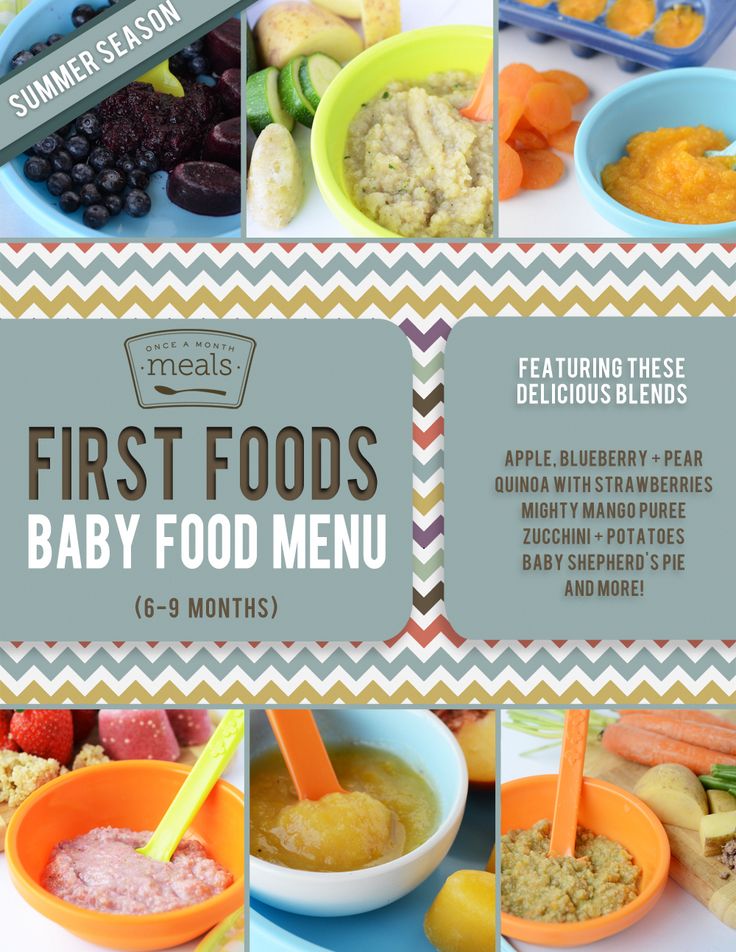 At the same time, in foreign recommendations, children over 1 year old are offered the gradual introduction of whole cow's milk, which is rich in fats necessary for proper growth and development, the absorption of vitamins A and D, the development of the brain and nervous system of the child. nine0007
At the same time, in foreign recommendations, children over 1 year old are offered the gradual introduction of whole cow's milk, which is rich in fats necessary for proper growth and development, the absorption of vitamins A and D, the development of the brain and nervous system of the child. nine0007
Meat dishes: 2-3 times a day
Fish dishes: 2-3 servings per week
Eggs: 2-3 per week
Dietary fats: 3-4 teaspoons of butter and/or vegetable oils per day
When cooking, use the minimum amount of salt and sugar, and do not add them to industrial products.
Offer your child a variety of foods and let them choose their own. Children love to eat on their own, so if possible, offer food that the child can eat with their hands. nine0007
It is important to remember that a baby can choke on pieces of food, so whatever you give your baby should be crushed or cut into small pieces that can be easily chewed.
Do not give to a young child: nuts, whole grapes, cherry tomatoes (unless quartered), whole carrots, seeds (such as pumpkin or sunflower seeds), round candies, legumes, raisins, because a child can eat them choke.




